|
||||
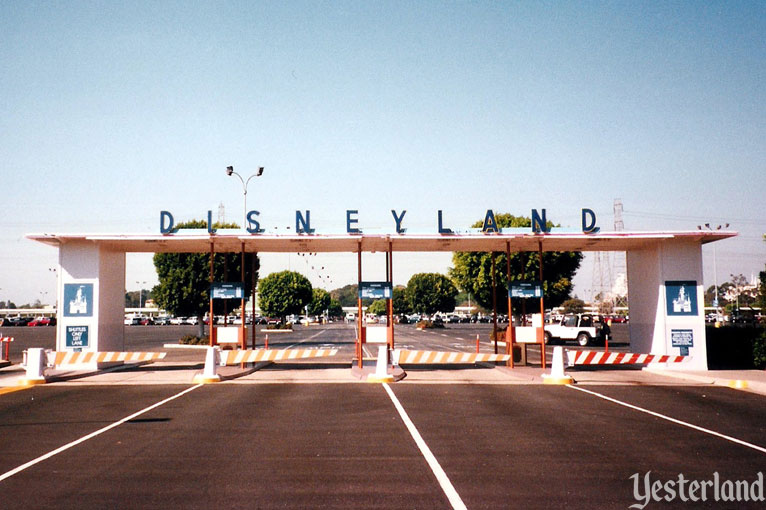
Photo by Chris Bales The seldom-open Katella gate |
||||
|
Pay your 25-cent parking fee and drive into the park’s 100-acre parking lot. It’s bigger than the park itself. Friendly parking attendants will direct you to a spot. Arrive early, and you may find yourself parked in the convenient Bambi section. But if you arrive later on a busy day, you could be way back in Thumper or Winnie the Pooh. |
||||
|
|
||||
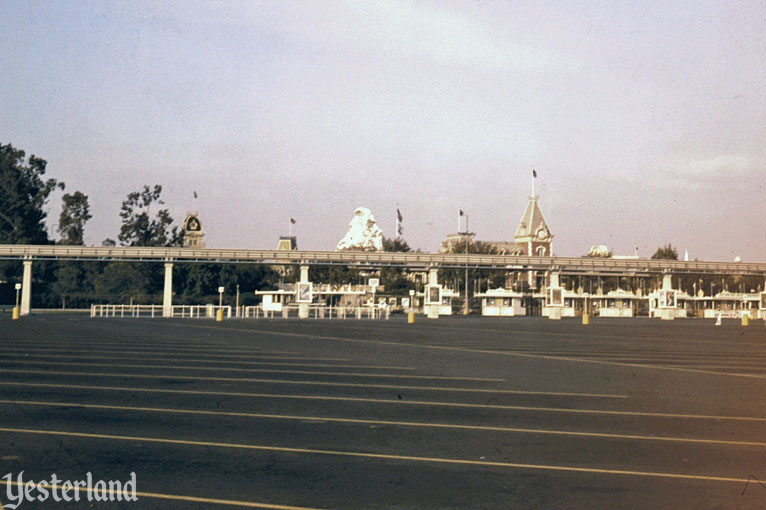
Photo, circa 1960, courtesy Orange County Archives Your spot awaits |
||||
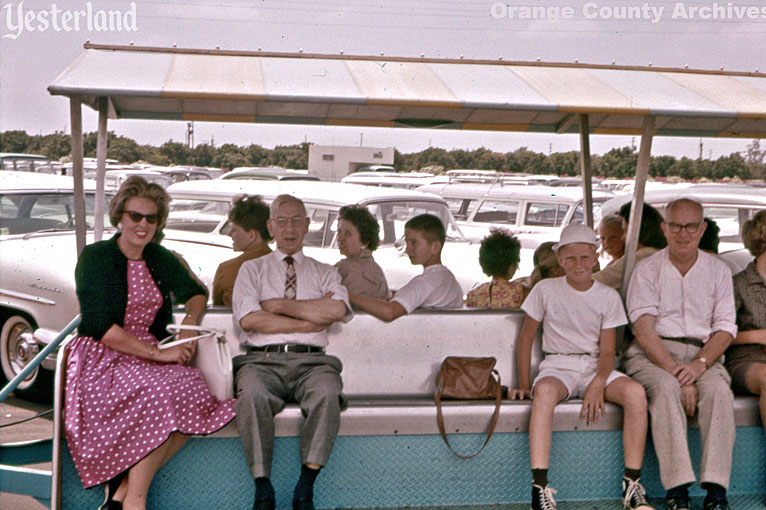
Photo, 1961, Alfred B. Osterhues Collection, courtesy Orange County Archives Parking lot tram |
||||
|
Regardless of where you park, you can walk directly to the front gate. However, you may prefer to take a free tram to save your feet for the park itself. |
||||
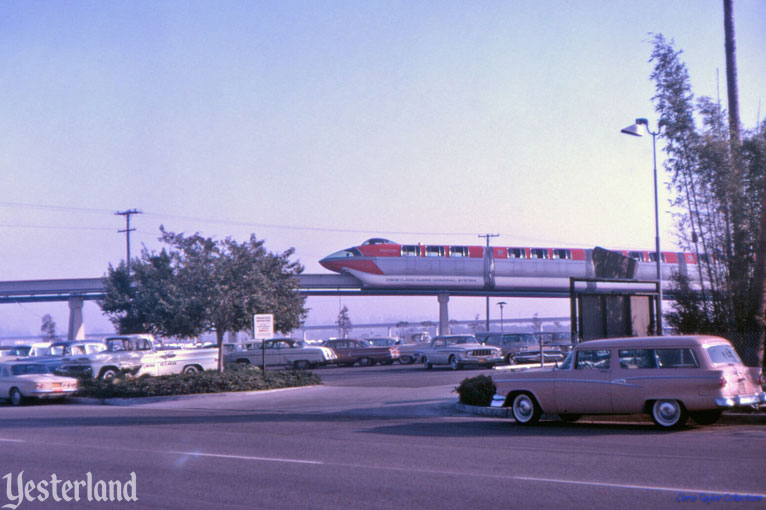
Photo by Charles R. Lympany, circa 1962, courtesy of Chris Taylor Monorail from the Disneyland Hotel |
||||
|
If you’re staying at the Disneyland Hotel, you can keep your car parked there. The park’s parking lot will still be part of your experience because the Disneyland Alweg Monorail carries you above it, providing a great view of the roofs of thousands of cars. |
||||
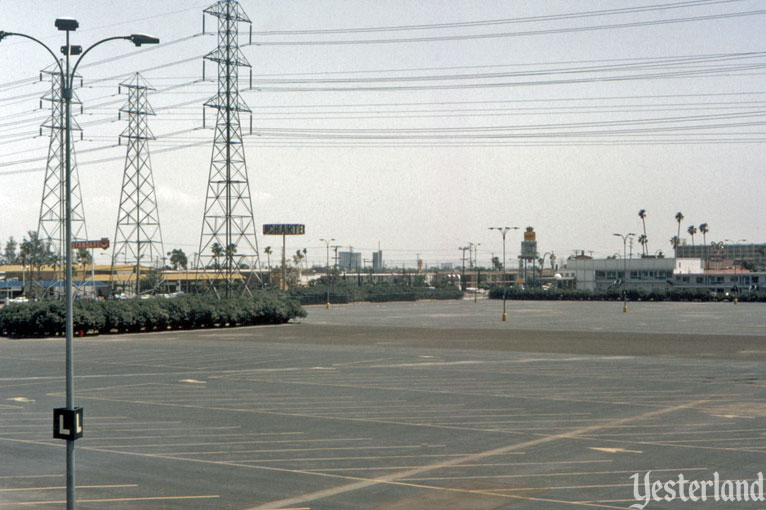
Photo by Charles R. Lympany, circa 1967, courtesy of Chris Taylor High tension power lines |
||||
|
Huge towers for high-tension electric power lines march across the parking lot. They’re useful as landmarks to help you remember where you parked. |
||||
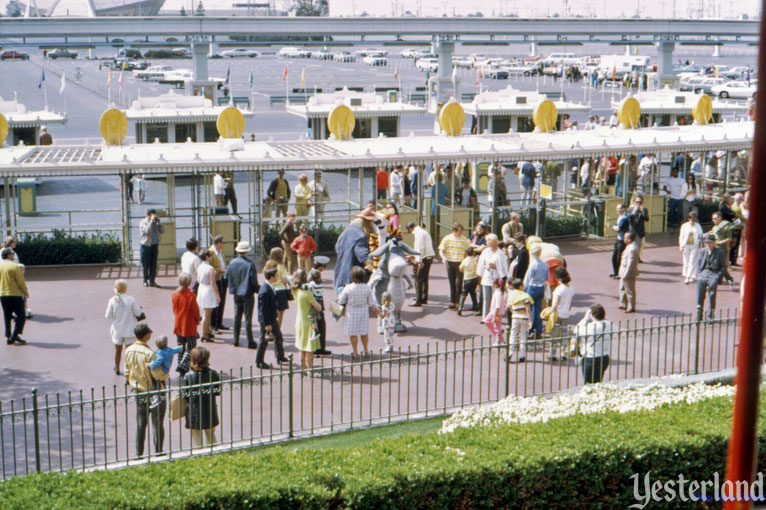
Photo by Charles R. Lympany, circa 1967, courtesy of Chris Taylor Ticket booths at the edge of the parking lot |
||||
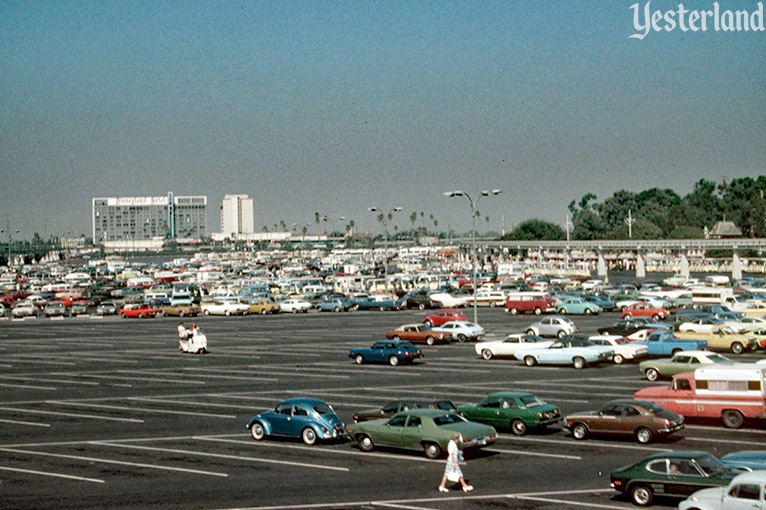
Photo by Marion Caswell, 1976, courtesy of Dennis Caswell Park where you’re directed, not where you’re closest to the park entrance |
||||
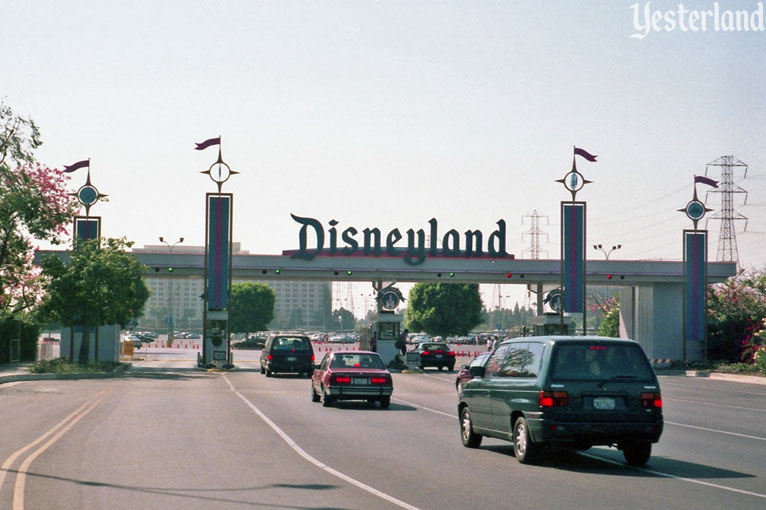
Photo Chris Bales, 1996 Parking toll booths at the Harbor Blvd. entrance |
||||
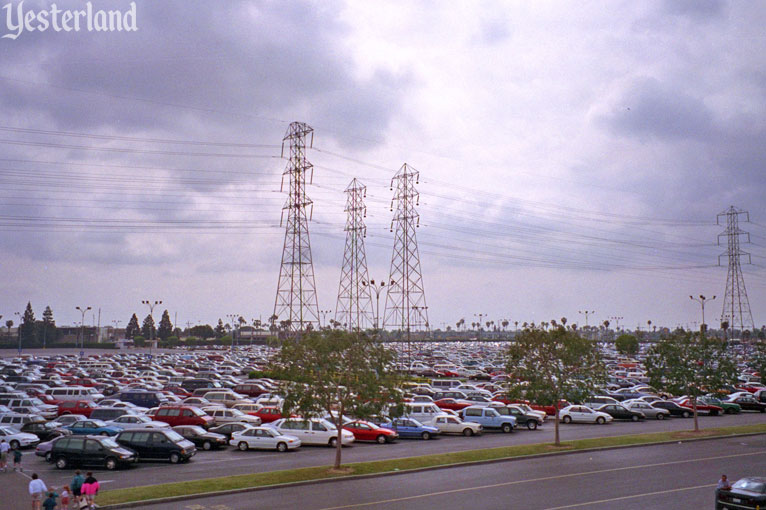
Photo Werner Weiss, 1997 Parking lot in its final year |
||||
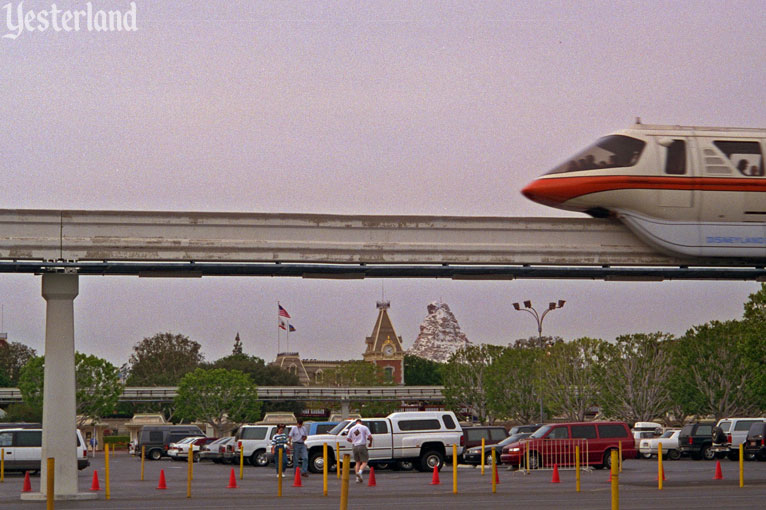
Photo Werner Weiss, 1997 Incredibly convenient Donald section |
||||
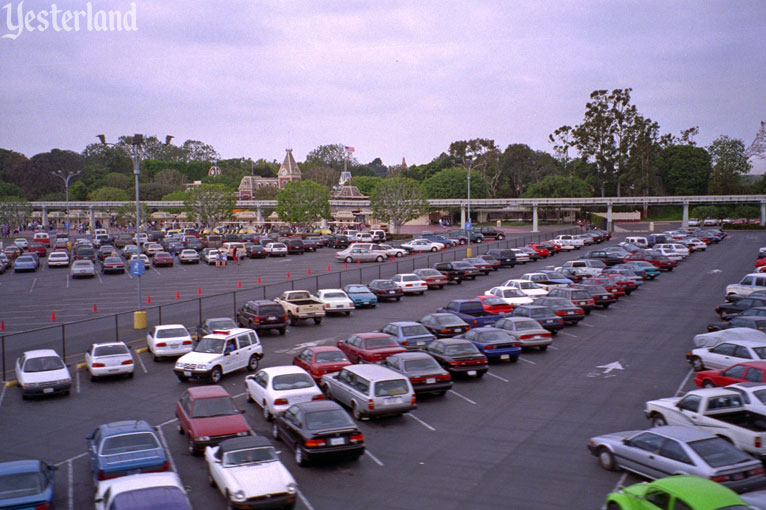
Photo Werner Weiss, 1997 Cast member parking, separated by a fence |
||||
|
At the end of the day, it’s time to walk or take a tram back to your car. You do remember where you parked, don’t you? Don’t you? |
||||
|
|
||||
|
There was a huge parking lot directly in front of Disneyland’s main entrance when the park opened in 1955. |
||||
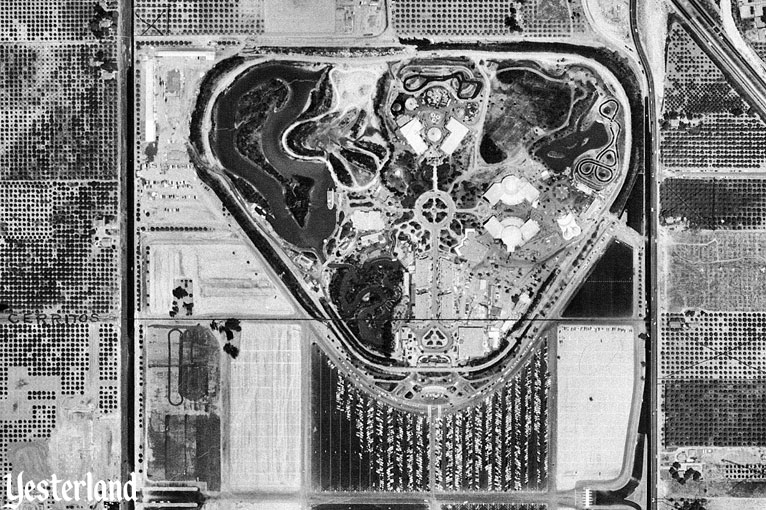
Courtesy Orange County Archives Disneyland on July 15, 1955—two days before the International Press Preview |
||||
|
Advertising in the Los Angeles Times on July 15, 1955, informed guests, “Disneyland’s parking will accomodate 12,175 cars for the convenience of visitors driving private vehicles. A nominal charge of 25c covers all day parking.” |
||||
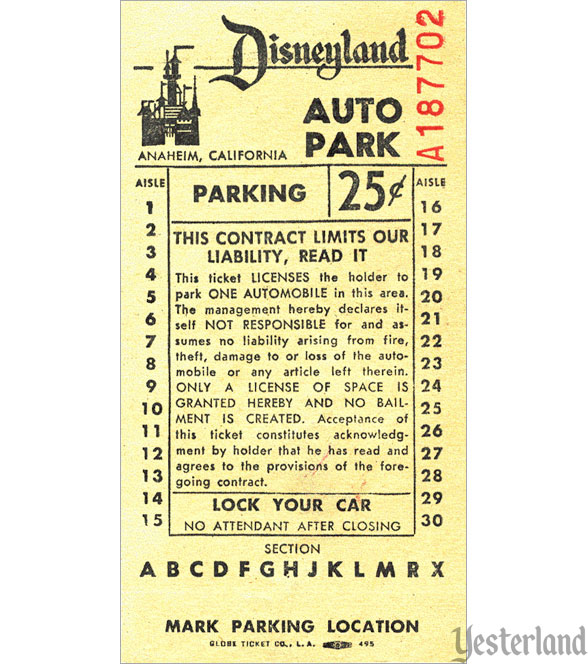
Scanned and provided courtesy of Bob Peart / © Disney Disneyland parking receipt from 1963 |
||||
|
Using the U.S. Government’s Consumer Price Index (CPI) inflation calculator, 25 cents in 1955 is equivalent to $2.41 in 2020. The lot grew to 15,167 spaces. The price of parking crept from 25 cents to 50 cents in the 1970s and $2.00 in the 1980s, with larger and more frequent increases beginning in the mid-1980s. |
||||
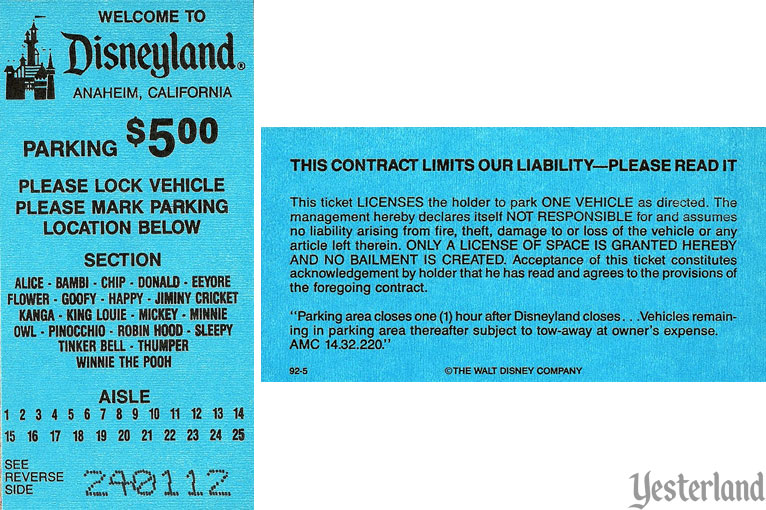
Scanned and provided courtesy of Chris Bales / © Disney Disneyland parking receipt from 1992 |
||||
|
Again using the CPI inflation calculator, $5.00 in 1992 is equivalent to $8.25 in 2020. Parking sections received character names, where once they had only been identified by letters. The show building for the Indiana Jones Adventure took a bite out of Eeyore. But, overall, not much changed. |
||||
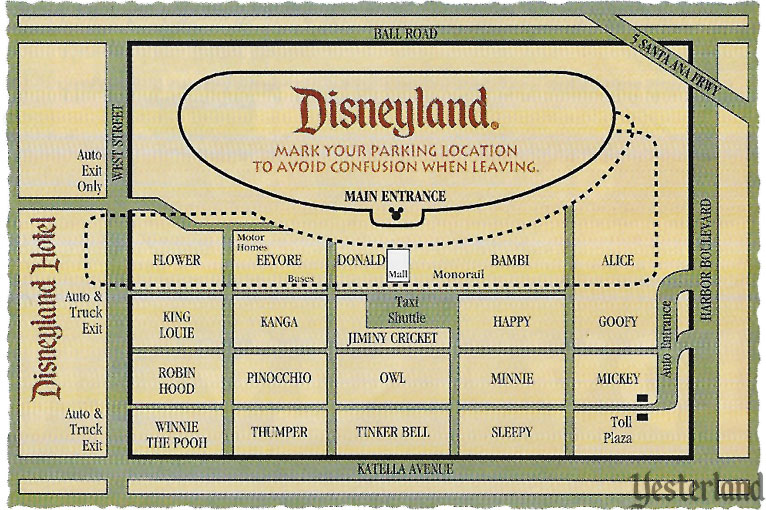
Scanned image © Disney 1995 Disneyland parking lot map from Inside Disneyland Today, 1995 |
||||
|
Then, the parking lot closed permanently on January 21, 1998, to make way for the Disneyland Resort expansion. Two days later, the Orange County Register marked its passing (“Say goodbye to the old parking lot as work begins in earnest on the new California Adventure at Disneyland,” by Marla Jo Fisher, January 23, 1998): Yesterday it was a parking lot. Today it’s Hollywood, Yosemite, San Francisco and Paradise Beach. Disney’s California Adventure began construction Thursday, as people bid adieu to the familiar Disneyland parking lot that has served as entrance to the park for 42 years. “We’re standing in Hollywood right now,” said construction manager Alan Rose, pointing to pavement that still looked remarkably like the parking lot it was two days ago. But there were already signs of things to come. A discarded Bambi sign lay on the ground, torn from its pole. The high-tension power lines were rerouted along the edge of the property. The new towers did not have the large footprints of the old towers, but were still (and continue to be) eyesores. Having lost the main parking lot, Disneyland guests used various surface lots for several years. The seven-story, 10,250-car Mickey & Friends Parking structure opened July 24, 2000. High-capacity ramps to and from the Santa Ana Freeway provide improved access to the Disneyland Resort from Los Angeles. |
||||
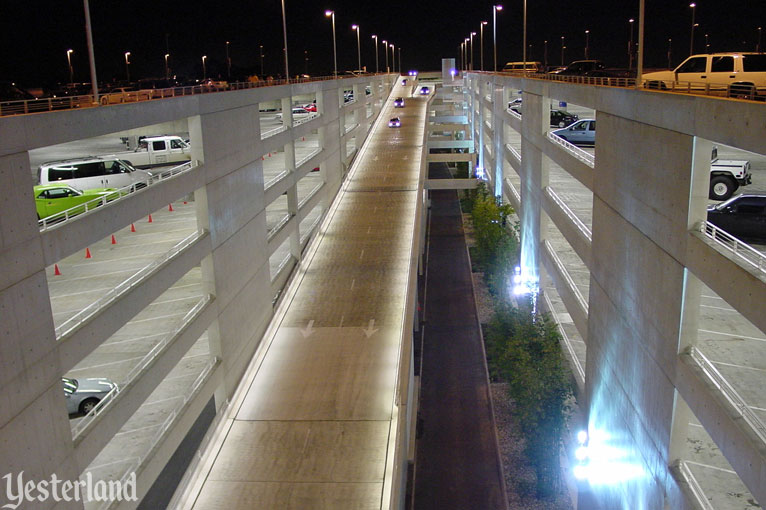
Photo by Allen Huffman, 2001 Mickey & Friends Parking in 2001 |
||||
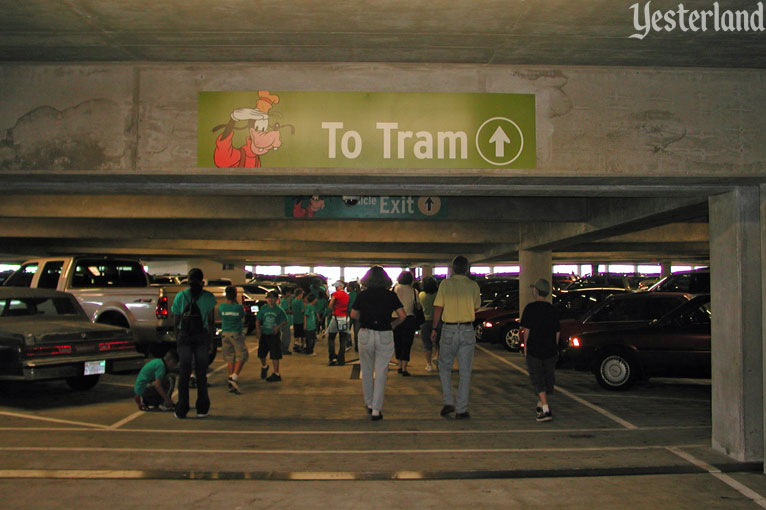
Photo by Werner Weiss, 2002 Inside Mickey & Friends Parking |
||||
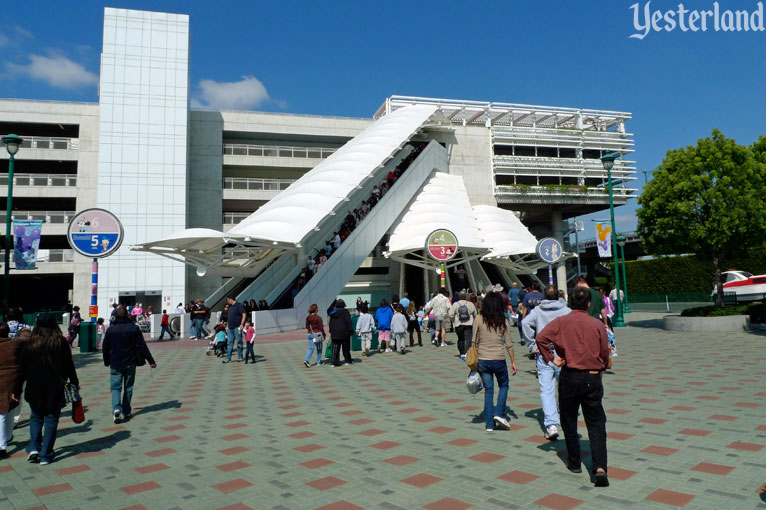
Photo by Allen Huffman, 2009 Mickey & Friends Parking structure and escalators |
||||
|
There was nothing fun or “magical”—or even particularly efficient—about the stark, modern parking structure. Aside from characters on signs, it was not even particularly “Disney.” |
||||
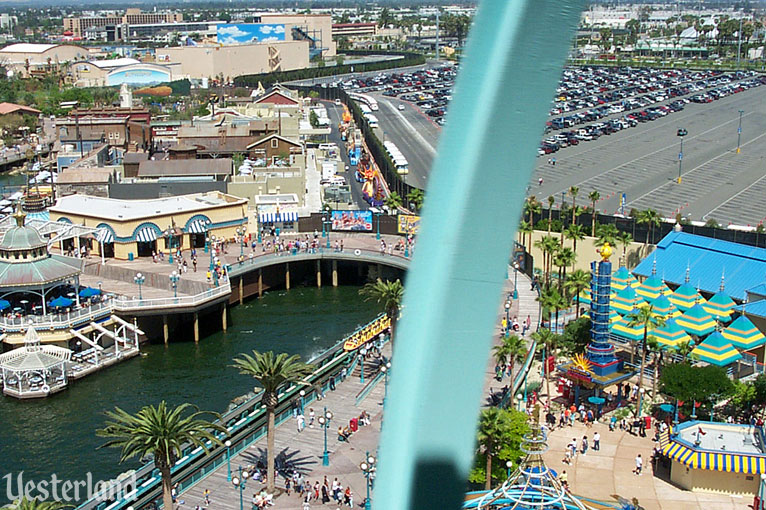
Photo by Tony “WisebearAZ” Moore, 2001 Timon parking lot adjacent to Disney’s California Adventure |
||||
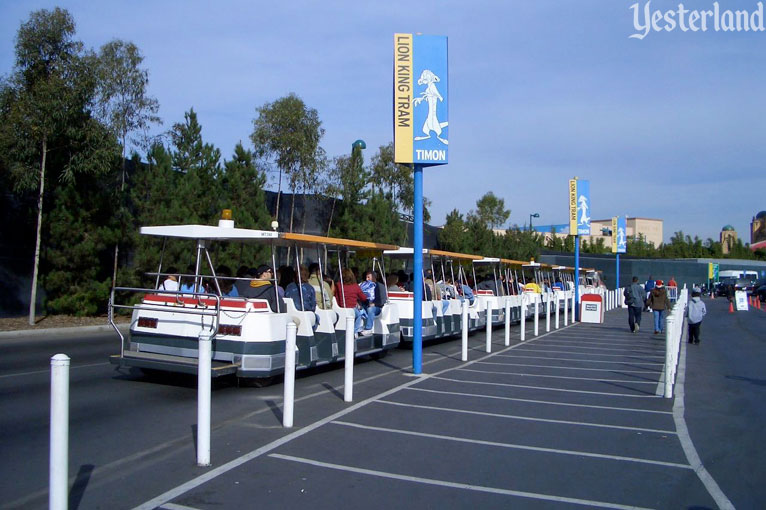
Photo by Allen Huffman, 2003 Timon parking lot tram |
||||
|
Even after Disney’s California Adventure opened February 8, 2001, guests could still use roughly 20% of the old parking lot, reborn as the Timon parking lot. The Timon lot disappeared as the newer park expanded. |
||||
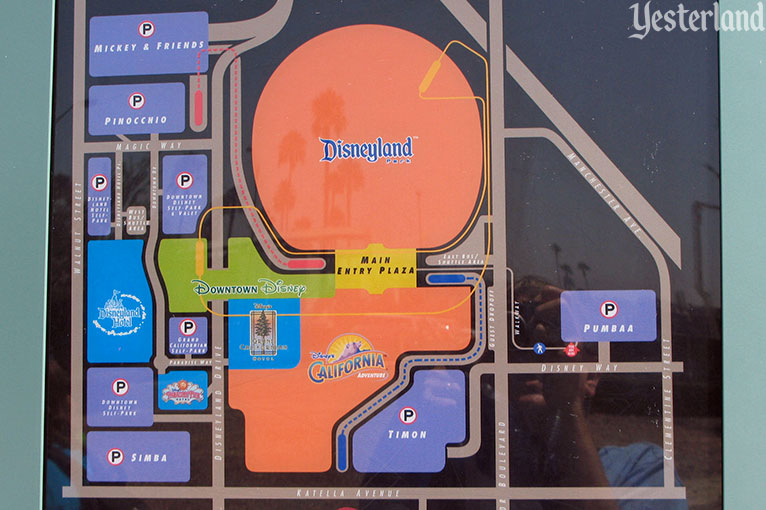
Photo by Werner Weiss, 2007 Lots of lots in 2007 |
||||
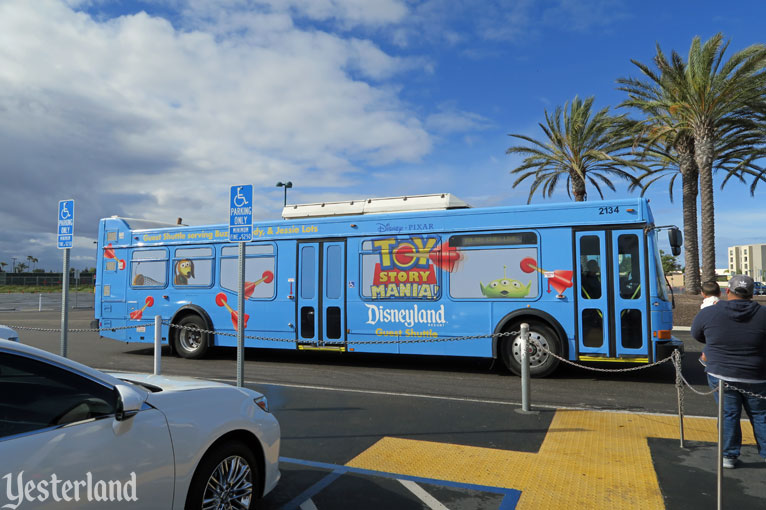
Photo by Allen Huffman, 2017 Toy Story lot, with buses through city streets instead of trams on private roads |
||||
|
In 2010, the Toy Story parking lot opened east of Harbor Blvd., across from the Anaheim Convention Center hotels. It’s where the Fujishige family had grown strawberries from 1954 to 1998, A few years later, Disney had more plans for east of Harbor Blvd., but further north. |
||||
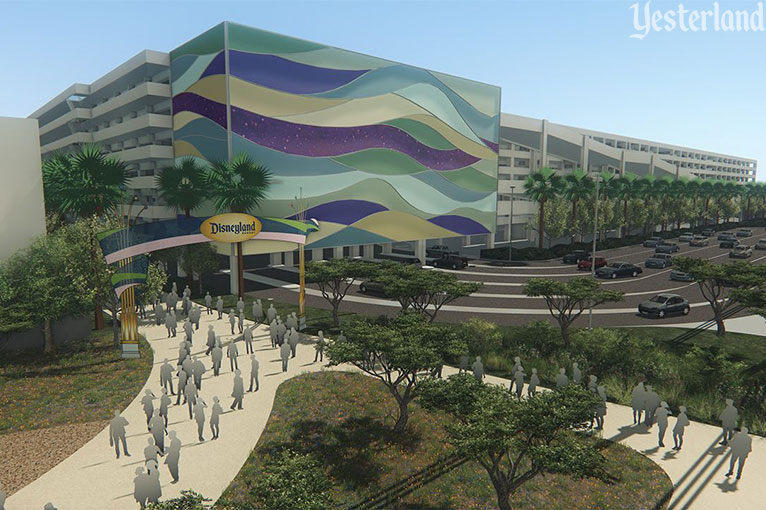
Concept art © 2016 Disney Disneyland Eastern Gateway Project |
||||
|
In 2016, Disney announced that the 1,300-space Pumbaa parking lot across Harbor Blvd. (where Disney imploded the 10-story Grand Hotel in 1998) was supposed to become a 6,800-space parking structure. A pedestrian overpass would connect this new parking option, along with a transportation hub to its north, to the rest of the Disneyland Resort. The plan was called the Disneyland Eastern Gateway Project. But it never happened. Disney cancelled the Eastern Gateway in 2017. The new plan was to concentrate parking on the western side of the property. In 2019, Disney opened the 6,500-space Pixar Pals Parking structure on the site of the former Pinocchio parking lot, just south of Mickey & Friends Parking. |
||||
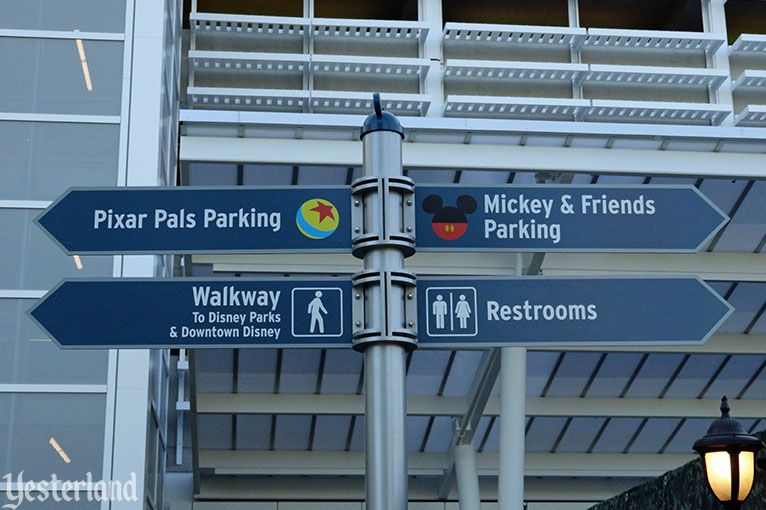
Photo by Chris Bales, 2019 Neighboring parking structures |
||||
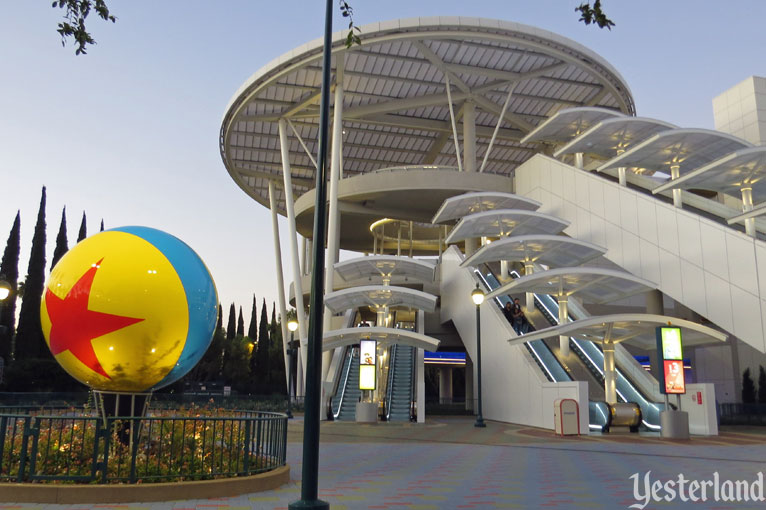
Photo by Chris Bales, 2019 Pixar Pals Parking escalators |
||||
|
The cost of parking is no longer “nominal.” In 2020, all-day theme park parking was $25.00 for cars and motorcycles, and more for larger vehicles. At least, that was the case until the pandemic closed the parks March 14, 2020, for the rest of the year—and beyond. |
||||
|
|
Click here to post comments at MiceChat about this article.
© 2000-2020 Werner Weiss — Disclaimers, Copyright, and Trademarks Updated December 4, 2020 |
|||